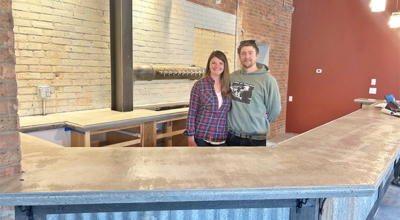Year-round schooling unrealistic for local districts
Published 5:37 pm Thursday, January 30, 2014
With lessons on math, science and English far removed from most children’s minds during their three-month reprieve from school, many district educators are rethinking the concept of summer vacation.
During his 2014 State of the State Address earlier this month, Gov. Rick Snyder proposed the creation of a pilot program for public schools that would allow them to transition to a new year-round schedule, replacing the traditional extended break with shorter ones interspersed the year. The idea is hardly a new concept in Lansing, as lawmakers have discussed similar initiatives to reduce the gap between lessons for Michigan students.
Closer to home, superintendents from local school districts have also considered extending the regular school year.
“The advantage of year-round school is that our students will have less time between non-instruction,” said Dowagiac Superintendent Mark Daniel. “It’s a good idea if your buildings and population can sustain it.”
Daniel said many students tend to struggle to catch back up with lessons when they return to class in the fall, resulting in overall lower grades and test scores. In addition, the original intention of an extensive mid-year break was to allow children to help their families harvest crops in the summer, which is no longer a mainstream concern these days, Daniel said.
The superintendent said he has discussed the idea of extending the school year on a number of occasions with fellow administrators. While he said he likes the concept, a number of complications prevent the district from implanting such a schedule.
“Having a year-round schedule without air conditioning would be very difficult,” Daniel said. “That would be a major hurdle for us to overcome.”
Dowagiac Middle School is the only one of the district’s six schools that has air conditioning, which would allow students to learn in a comfortable environment during in the dead of summer, Daniel said.
In addition, the district would also face a challenge in finding a new location for students in its migrant learning program, which runs during the summer. Around 250 students are enrolled in the program, which utilizes classroom space from a number of the district’s buildings, primarily Sister Lakes Elementary.
Cassopolis School District has also considered extending the school year, though conversations have stalled for similar logistical reasons.
“We have been looking at it and are still looking at it,” said Superintendent Tracy Hertsel. “With so many moving parts, trying to get everyone going in a single direction is difficult.”
Part of the difficulty comes from coordinating schedules with the Lewis Cass Intermediate School District, who uses classroom space for its programs during the summer.
Like Daniel, Hertsel supports the idea, even though current realities prevent the district from moving forward on making changes.
“I think it’s good for kids and everybody else,” he said. “It allows for more learning opportunities, especially for kids who are struggling.”






